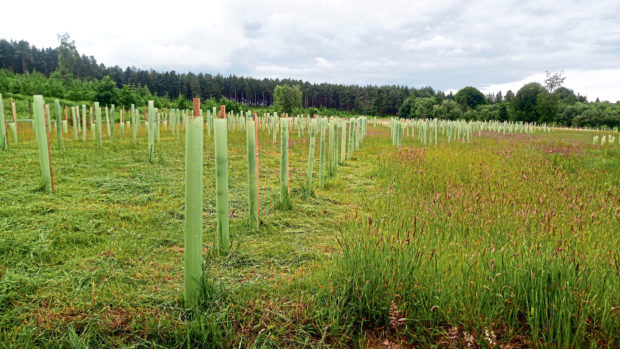Introducing a levy on airlines or fossil fuel companies has been suggested to help pay for a huge boost to woodland planting.
The UK Government’s Committee on Climate Change made the recommendation in a new report calling for major and urgent changes to how land is managed to help the UK reach its legal target to cut emissions to net zero by 2050.
A fifth of agricultural land needs to be taken out of production and freed up for natural methods of storing carbon such as more woodlands and trees, the first in-depth report on land use from the committee says.
Encouraging people to cut the beef, lamb and dairy they consume by a fifth – which the committee said was a “modest” reduction within government health guidelines – will help cut greenhouse gases and free up land for storing carbon.
Around 75,000 acres or 100 million trees a year need to be planted from 2023 up to mid-century, a significant increase on today’s levels of planting, which were around 32,000 acres last year.
A system similar to the subsidies which have boosted renewable energy in recent years, with auctions for contracts for planting and guaranteed long-term payments for land managers, could deliver the required increase.
An alternative method would be a carbon-trading scheme, and either policy could be paid for by greenhouse gas-emitting industries such as fossil fuel providers or airlines, the report suggests.
The report also said low-carbon farming methods also need to be encouraged, such as feeding cattle supplements which cut their methane emissions, along with cutting food waste by a fifth and expanding bioenergy crops.
The changes outlined in the report would cost around £1.4 billion a year in private and public funding up to 2050, but would deliver £4bn in annual benefits, the committee said.
“Changing the way we use our land is critical to delivering the UK’s net-zero target,” said committee chairman Lord Deben.
“The options we are proposing would see farmers and land managers – the stewards of the land – delivering actions to reduce emissions. Doing so can provide new revenue opportunities for farmers, better air quality and improved biodiversity, and more green spaces for us all to enjoy.”
But he said the changes could not be delivered in the normal course of business, and warned: “We are in a race against time, there’s no doubt urgency must be the hallmark of what we are doing here.”
Achieving emissions reductions should not be at the expense of producing less food in the UK and increasing imports, the report said.
Committee chief executive Chris Stark said British beef and lamb has some of the lowest rates of emissions in the world but emissions from livestock still needed to be cut.










